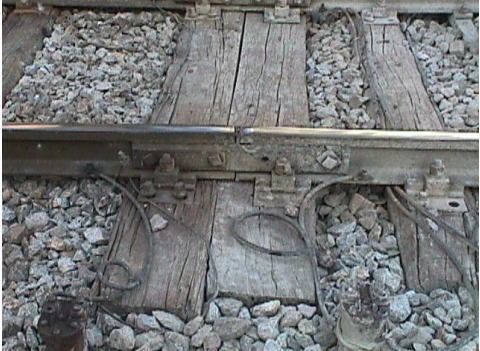Wooden railway ties are horizontal load-bearing structures placed between rails to secure them and evenly transfer the load to the ground. These ties are typically made from durable wood species such as oak, spruce, or pine. They help preserve the track gauge by absorbing forces from the rails and transferring them to the ballast layer, maintaining track alignment against lateral effects.
Role in Railway Infrastructure
Ties are used to maintain the track gauge, transfer vertical and horizontal loads from the rails to the ballast, and ensure the continuity of railway geometry. Although the Republic of Türkiye State Railways (TCDD) utilizes various types of tie materials, wooden ties are preferred particularly in areas with signaling systems and in segments of the track where electrical insulation is essential.
Current Use
According to TCDD’s 2023 Network Statement, although prestressed concrete ties dominate Türkiye’s rail network, wooden ties are still widely used in short-distance connecting lines, shunting yards, and signaling zones.
Technical Specifications
The technical properties of wooden ties depend on their intended use and geographical conditions:
- Material: Durable woods such as oak, pine, and spruce
- Length: Approximately 260 cm
- Width and Thickness: 20–25 cm wide, 12–16 cm thick
- Weight: 60–90 kg
- Durability: Impregnated ties can last 20–30 years
- Impregnation Method: Creosote oil impregnation is the most common method (for protection against decay and insect infestation)

Wooden Railway Ties Used in Railways (Yüksel Güngör, Ministry of National Education)
Applications
- Signaling Systems: Compatible with signal systems due to their electrical insulation properties
- Temporary Tracks: Preferred for their lightweight, portability, and ease of removal
- Narrow Gauge Railways: Suitable for flexible track configurations
- Manual Switch Areas and Level Crossings: Used in areas requiring high precision and compatibility
Advantages
- Electrical Insulation: Superior to concrete or steel ties
- Flexibility and Damping: More elastic under dynamic loads; reduces impact effects
- Ease of Supply and Transport: Lightweight material facilitates logistics
- Compatibility with Traditional Systems: Advantageous in upgrading existing infrastructures
Limitations
- Decay and Biological Degradation: Susceptible to fungi, mold, and insect damage without proper protection
- Fire Risk: Flammable, especially hazardous in hot climates
- Environmental Risk: Chemicals like creosote pose environmental and health concerns
- Shorter Service Life: Typically less durable than concrete or composite ties
Strategic Evaluation
In its Strategic Plan for 2024–2028, TCDD emphasizes prioritizing infrastructure modernization. Environmentally friendly, low-maintenance, and long-lasting materials will be favored. However, wooden ties are expected to remain in limited use in existing lines due to their benefits in signaling and ease of maintenance.
Standards
- TS EN 13145: European standard for wooden railway ties and longitudinal timbers
- UIC 864-2: Technical regulations of the International Union of Railways for wooden ties
- TCDD Technical Specifications: Details on tie production, dimensional tolerances, and impregnation processes
Wooden railway ties continue to play an active role in specific parts of Türkiye’s railway infrastructure. Although they have certain disadvantages compared to modern alternatives like concrete and steel, their advantages—such as electrical insulation, light weight, and ease of handling—make them preferable in signaling lines, maintenance zones, and temporary applications. In the long term, models supported by durable wood species and sustainable impregnation methods that reduce environmental impact are of both technical and strategic importance.

